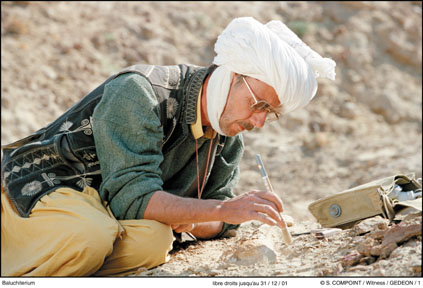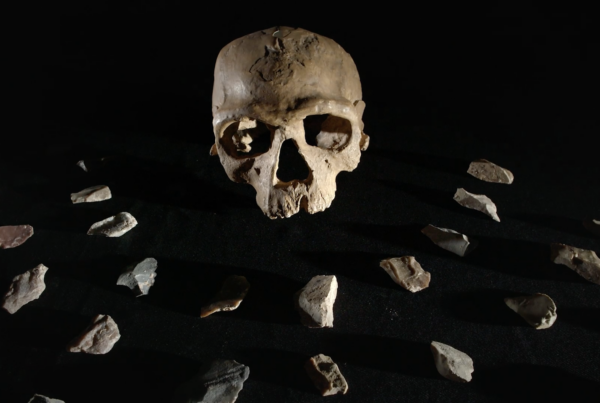It is a gigantic animal. Almost 20 tons in weight. Three times the size of an elephant. The largest mammal of all times. With feet like a rhinoceros, the body of a bovine, the neck of an okapi and the head of a tapir, it appears to have come out of a fantasist’s imagination. Nevertheless, the Baluchitherium did certainly exist. In Baluchistan, an isolated province of North Pakistan, in an unreal desert environment, the French palaeontologist Jean-Loup Welcomme has discovered, after five years of searches, the fossilised remains of the Baluchitherium, a distant cousin of the rhinoceros, which disappeared 25 million years ago. To survive, this animal had to consume one ton of food per day. To get on with his investigation Jean-Loup Welcomme had to persuade the formidable Bugti warriors, the famous “Baluchistan Tigres”, whom no conqueror –not even Ghengis Khan– had managed to subdue. This adventurous scientist is today the only foreigner authorised to carry on his work in this forbidden region, under the surveillance of armed guards. In a sandy ravine at the foot of a rocky sunburnt cliff, some twenty Baluchitherium skeletons were brought to light. An entire herd had probably been surprised by a flood, while crossing the river. Step by step, the palaeontologist reconstructs this 25 million year old tragedy, and attempts to revive this lost giant with the use of animation techniques and synthetic imagery. The results are stunning.
- Direction: THIERRY MACHADO
- Production: GEDEON PROGRAMMES







